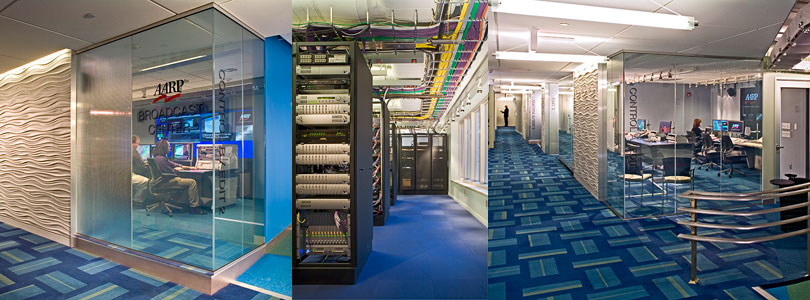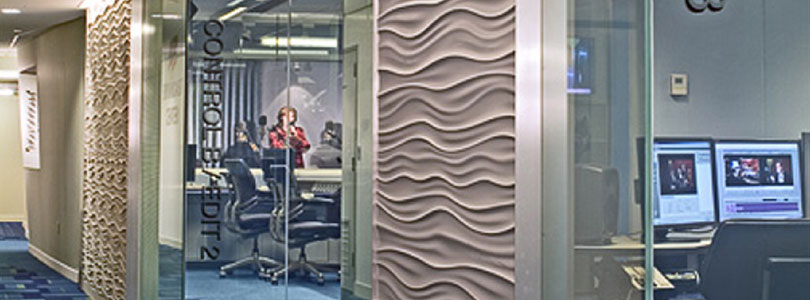AARP

AARP Broadcast Operation Center, Washington, DC
12,000 S.F.
Strategy: Renovate in place, without disrupting on-going business. The Operation Center was located behind solid doors with edit rooms along boarded -up windows. Access to these edit suites was through the equipment room, a maze of racks and snacked cables. Movement was difficult during normal times, but dangerous during broadcasts when timing was critical. Visitors journeyed from the green room to the studios along a dark and dingy corridor, and the 400+ staff of AARP had no idea what occurred in this mysterious place. The intended upgrade of equipment from Analog to Digital triggered the opportunity to reconfigure the space, creating sightlines to the work product and a better work environment.
Results: Edit and production rooms were moved away from the windows and toward the core. Their functions were exposed through the use of glass walls, that frost at the touch of a switch for visual privacy. More glass, with acoustical detailing, was added to the radio studio. In fact, the first official broadcast after construction drew crowds. For the first time employees could watch the interviews, and hear them through strategically placed speakers.
With the state-of-the-art technology integrated into the renovated facility, infrastructure and acoustic upgrades were required and were seamlessly woven into the design. With ductwork using the limited space above the finished ceiling and a cable tray below, a complex ceiling design was necessary to hold diffusers, and speakers. Surface-mounted fixtures were installed offering different light levels for editing, viewing, cleaning, and repair (something is always being fixed in TV).
The equipment room, housed in windowless core area, moved to the window line, creating a pleasant work environment for the broadcast engineers. The solar effect, along with the racks of equipment created a cooling nightmare, further challenged by the typical low ceiling of a concrete office building. The layout of the racks was strategic to enable the stacking of cable trays, ductwork and lighting under beams and fit in the 9’-6” slab to slab dimension.
A request for no raised floors resulted in cable trays that connected the edit rooms with the studios and producers. The ‘technical look’ of the open trays produced a requirement to make the trays elegant Resin doors were attached to the tray and hinged to swing down for easy access. The plan, inspired by the need for transparency, shaped the details. The result is space organized on a datum line that traverses through the space, connecting edit rooms to studios, visitors with staff, and all with the ‘cool’ operations of TV productions.



